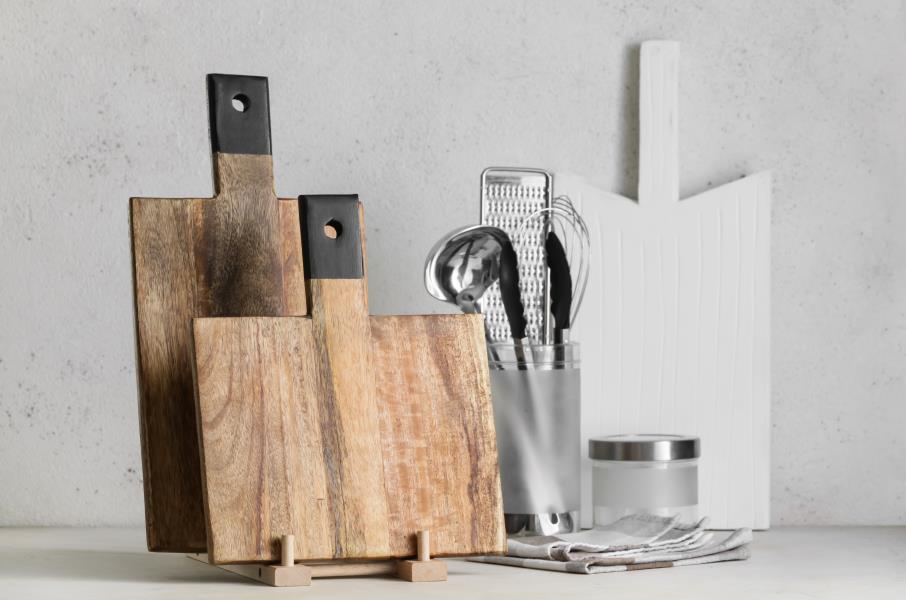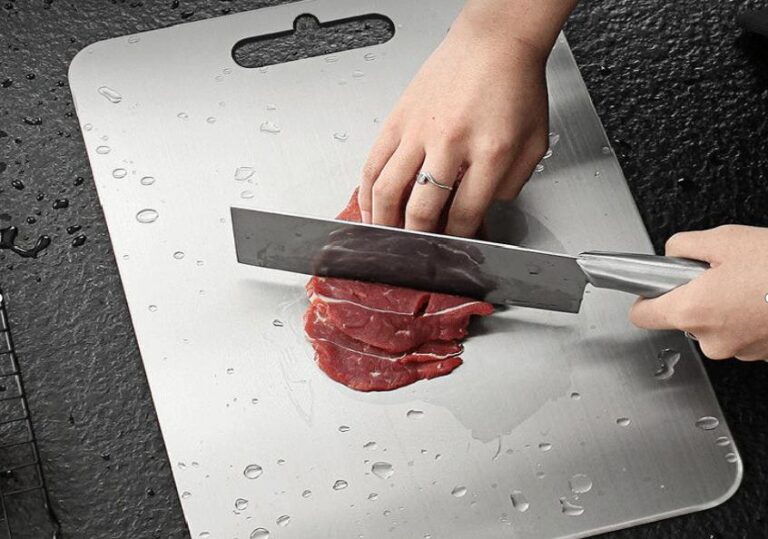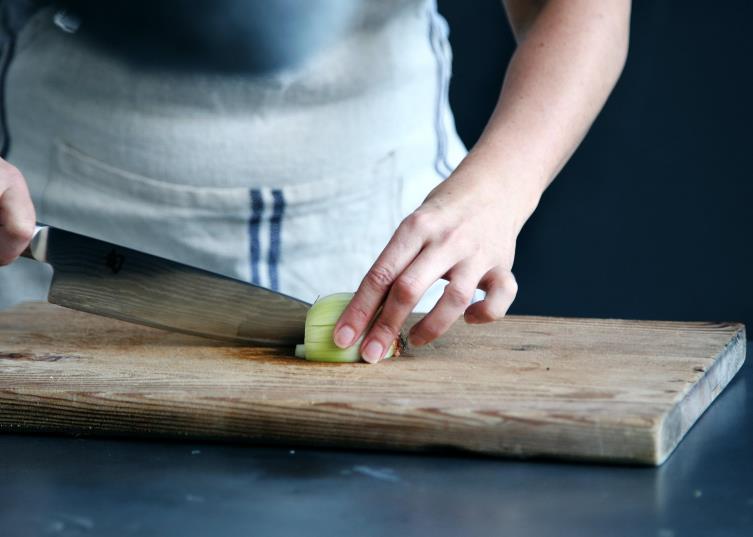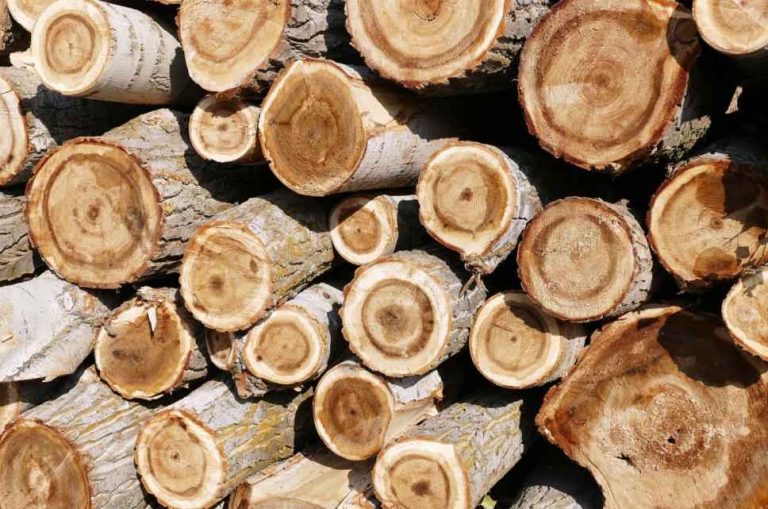The wood in cutting boards is the same as steel in knives. It determines the cutting board’s characteristics. The wood choice can lead to a suitable surface to cut or make an incompetent board.
Acacia and teak wood are two popular choices that produce good-quality cutting boards. It’s common for cooks to dabble between the two, and so do knife stores.
In this guide, we’ll break down the key differences between acacia and teak cutting boards, from appearance and hardness to upkeep and longevity, so you can decide which is better suited for your kitchen or knife catalog.
What is Acacia wood?
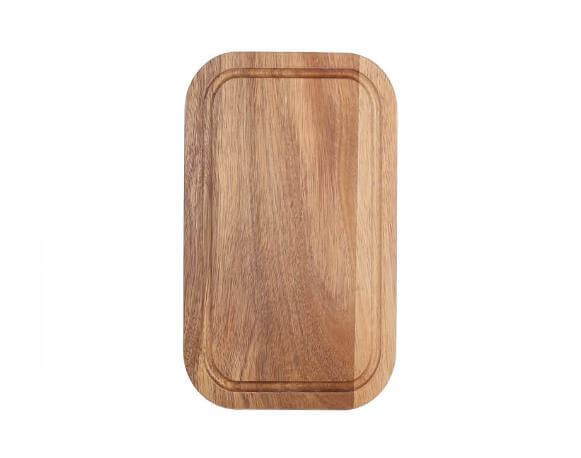
Acacia wood comes from the Acacia genus, a diverse group of fast-growing hardwood trees and shrubs native to Asia, Africa, and Australia. It’s recognized for its rich, wavy grain, warm tones, and natural durability.
These features make it a popular choice for furniture, flooring, and especially kitchen cutting boards.
What is Teak wood?
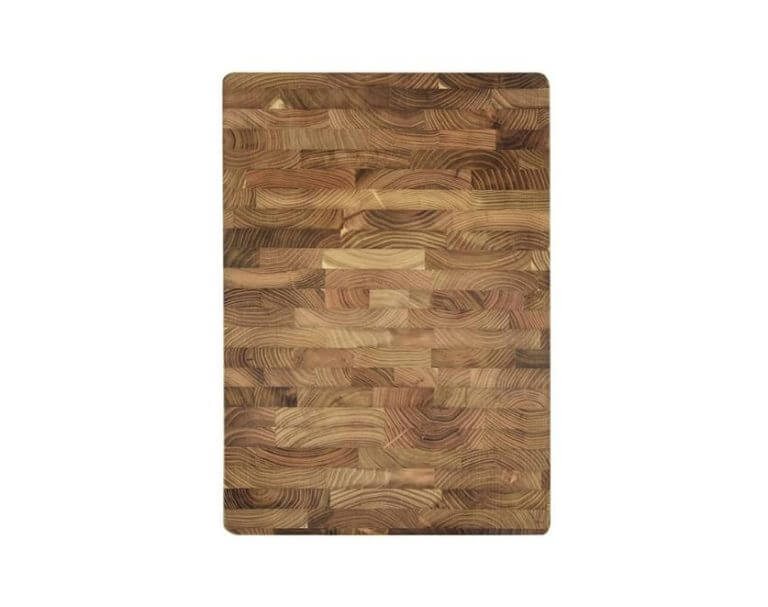
Teak is undoubtedly one of the best wood choices for cutting boards. It’s rich in natural oils, hard enough to achieve good durability, yet soft enough to be gentle on knives.
This hardwood is a highly-sought material that also has uses in countertops and butcher’s blocks. Anywhere resiliency against moisture and bacteria is needed, teak is often a manufacturer’s first pick.
Acacia vs. Teak: Key differences that matter
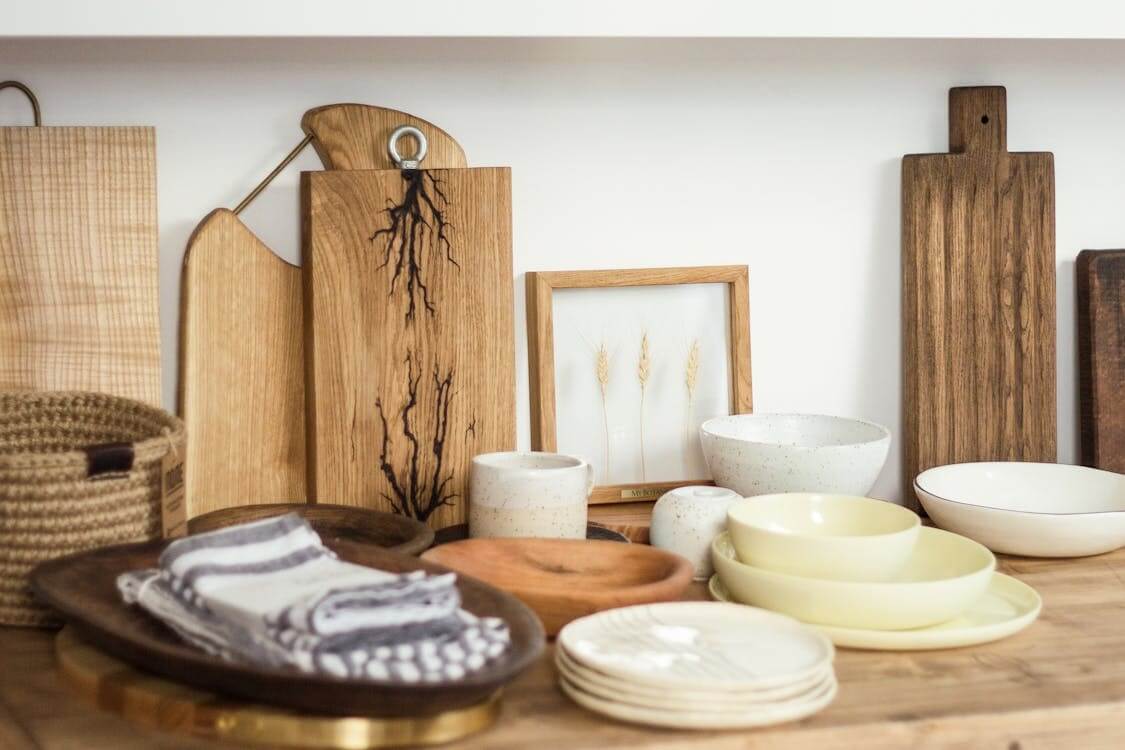
| Feature | Acacia | Teak |
| Appearance | Bold, rustic grain with varied colors | Golden-brown, uniform, and elegant |
| Durability | Hard and durable, but may wear faster | Extremely durable, dense, and impact-resistant |
| Water Resistance | Moderate (requires regular oiling) | Excellent due to natural oils |
| Maintenance | Needs more upkeep to prevent cracking or dryness | Lower maintenance; retains oils naturally |
| Knife-Friendliness | Gentler on blades | Slightly tougher, can dull knives over time |
| Longevity | Good with proper care | Excellent long-term performance |
| Price | Budget-friendly | Premium, more expensive |
Buy Wholesale Cutting Boards and Start Scaling up with Us Today
Contact us and connect with a sales rep to get a free quote.
When comparing acacia and teak cutting boards, the differences go beyond just color and price. Each wood type brings its own set of strengths, and trade-offs that matter whether you’re a home cook, professional chef, or store owner choosing what to stock.
Let’s break down the key decision-making factors.
Aesthetics
Acacia has a striking grain pattern, with dark and light streaks that create a rustic, natural look. Teak, on the other hand, tends to be more uniform in color, typically golden brown, with a smoother, more elegant finish.
Best for:
- Acacia: Customers who love a bold, eye-catching board
- Teak: Customers seeking a more refined, classic kitchen style
Durability
Both woods are hard and durable, but teak has a slight edge due to its higher oil content and tighter grain structure. It resists scratches and dents better over long-term use.
Winner: Teak, especially for heavy daily chopping.
Maintenance
Teak requires less oiling due to its natural oils, while acacia may need more frequent conditioning to prevent drying or cracking. That said, both need basic upkeep like hand washing and occasional mineral oil treatments.
Do they turn gray?
Yes, both woods can turn gray with prolonged sun exposure or neglect. However, this is preventable with regular oiling and indoor storage.
Water resistance
Teak naturally repels water better than acacia thanks to its oil-rich fibers, making it slightly more resistant to warping and splitting. Acacia holds up well too, but it’s a bit more sensitive to excessive moisture.
Knife friendliness
Acacia’s slightly softer texture makes it gentler on knives, helping maintain blade sharpness over time. Teak is still good, but its dense fibers can be marginally tougher on blades if used aggressively.
Longevity
When it comes to long-term performance, teak generally has the upper hand. Its dense structure and high natural oil content help it resist cracking, drying, and warping over time, even with minimal maintenance.
Acacia is durable too, but it’s more prone to developing surface wear or minor splits if not regularly conditioned. With proper care, both boards can last for years, but teak tends to age more gracefully in the long run.
Price
Acacia is generally more affordable and widely available, making it a great choice for budget-conscious shoppers. Teak is pricier due to its slow growth, harvesting restrictions, and premium status in the market.
Acacia cutting boards: Pros & cons for knife use
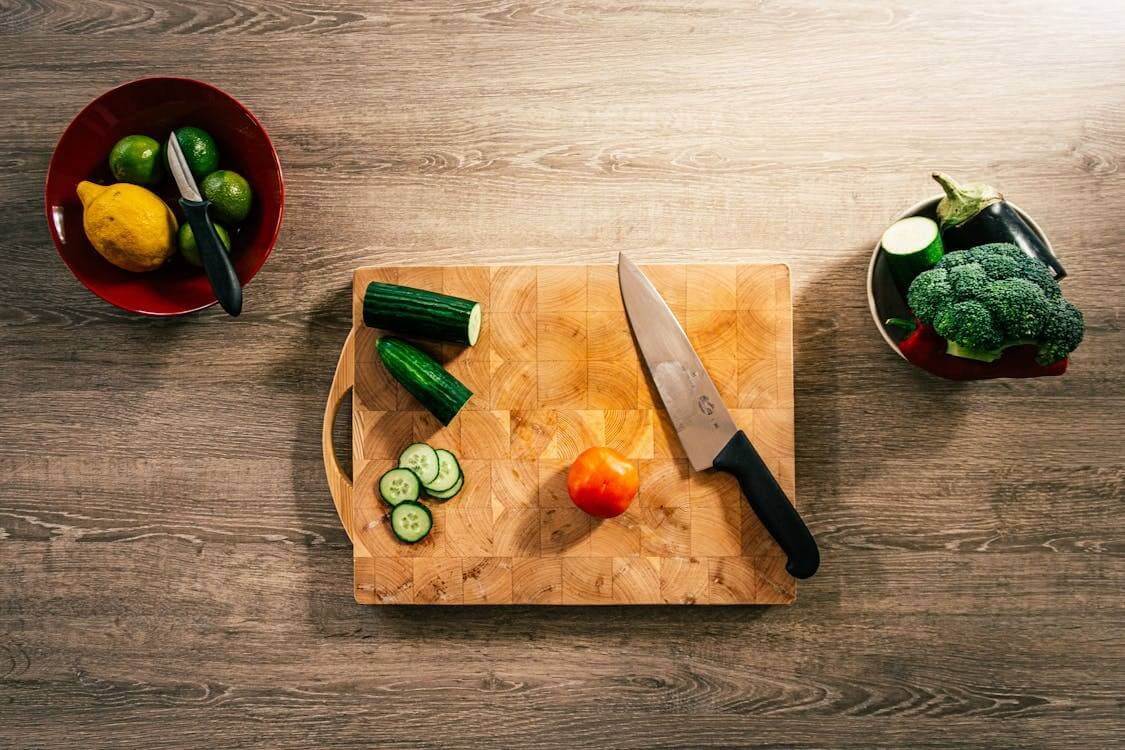
Pros
- Great for maintaining a stable cutting surface for repeated knife use.
- Gentle on knife edges due to its moderate hardness, helping extend blade sharpness.
- Attractive grain and color make it visually appealing for kitchen displays and photography.
- Widely available and cost-effective, ideal for pairing with entry-level to mid-tier knife sets.
Cons
- Softer than teak, so it shows knife marks more quickly with heavy use.
- Wood grain variability may lead to uneven cutting feedback.
- Requires regular oiling to prevent surface dulling and protect the board (and your knife edge) from wear.
Takeaway: Acacia boards are perfect for casual or everyday users who want an affordable board that won’t dull their knives too quickly. But they may need more frequent upkeep in knife-heavy kitchens.
Teak cutting boards: Pros & cons for knife use
Pros
- Dense and durable, with high natural oils that repel moisture. Perfect for resisting wear from repeated slicing, dicing, and chopping.
- Its balanced hardness is gentle enough on knives to avoid quick dulling, while being tough enough to resist gouging.
- Holds up well to long-term, high-volume knife use, ideal for professional kitchens or serious home chefs.
- Elegant and luxurious appearance, suitable for showcasing premium knife sets.
Cons
- Pricier than acacia and heavier to handle, might be overkill for casual users.
- High oil content can make it tricky to glue during manufacturing (relevant for DIY users or custom board makers).
- Can blunt very thin or fragile blades slightly faster than softer woods if not used properly.
Takeaway: Teak is a top-tier cutting board choice for anyone working with high-end or frequently used knives. It’s built for performance and longevity, with minimal compromise.
Types of Acacia Wood
- Acacia Mangium: Commonly found in Southeast Asia, this variety is widely used in cutting boards due to its availability, strength, and attractive appearance. It’s also sustainably grown on plantations, making it a more eco-conscious option.
- Acacia Auriculiformis: Another tropical species valued for its density and robustness. It’s often used for heavy-duty kitchen products like butcher blocks or boards meant for frequent use.
- Acacia Koa (Hawaiian Koa): Known for its striking grain and rich color variations, koa is rarer and typically reserved for premium products. It’s less common in cutting boards due to higher costs but adds a luxury appeal when used.
Types of Teak Wood
- Burmese Teak: The most premium and traditional variety. It’s dense, high in natural oils, and has a straight, tight grain, making it ideal for high-end cutting boards. However, it’s also expensive and heavily regulated due to sustainability concerns.
- Indonesian Teak: More commonly used in commercial products today. It’s plantation-grown, making it more sustainable and accessible than Burmese teak. Still offers excellent durability and moisture resistance.
- African Teak (Iroko): Often used as a teak substitute. It’s more affordable and visually similar but may have slightly lower oil content and durability compared to Asian teak.
Other wood that makes a great cutting board material
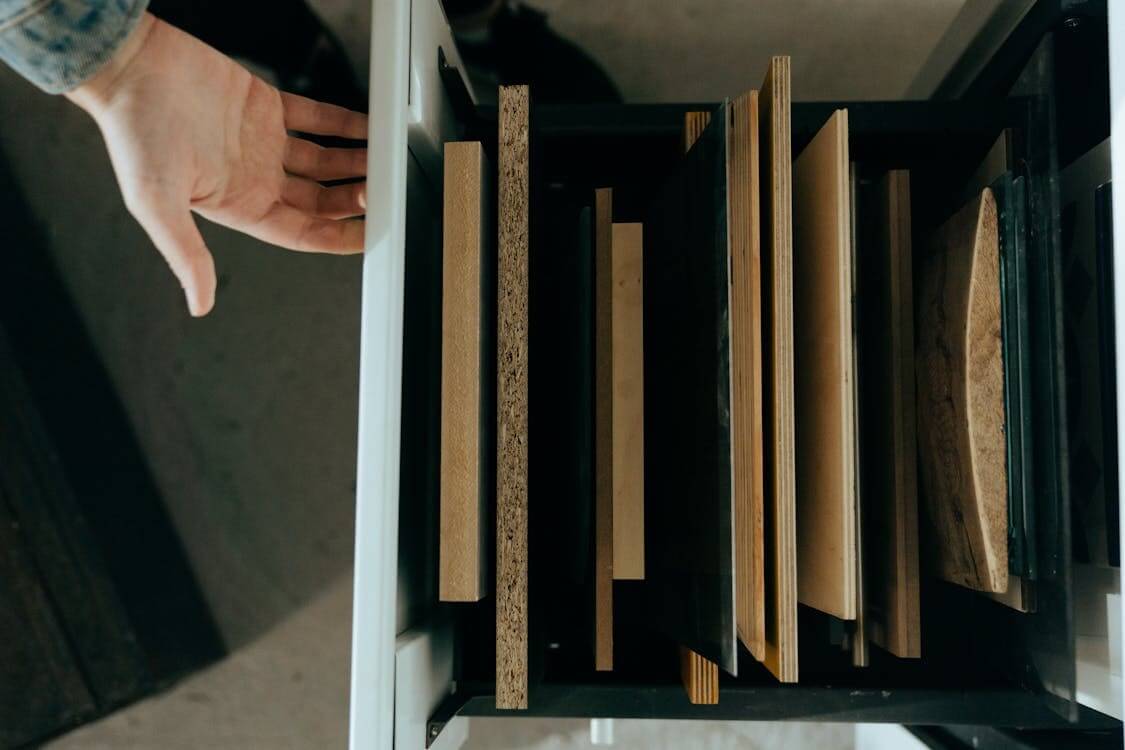
Acacia and teak make great cutting boards, but your options aren’t certainly limited. Maple, cherry, ash, walnut, beech, and many others are just as great.
Just like how steel affects the features of a knife, the wood does the same for cutting boards.
Read more about knife accessories from our blog to find out what to expect from different woods as a cutting board material.
Buy Wholesale Cutting Boards and Start Scaling up with Us Today
Contact us and connect with a sales rep to get a free quote.
Acacia or teak: which one to sell?
Acacia cutting boards come in a broader selection of colors, qualities, and prices. They fit perfectly to every budget, making it an excellent product for knife stores that appeal to everyone.
Teak can be the perfect cutting board your customers anticipate. If the higher price tag won’t be scary, placing it above acacia is not a wrong choice.
The bottom line is that teak makes a tiny bit better cutting board than acacia. It’s up to knife stores to decide if the higher price is worth it for the target customers.
At LeeKnives, we have both acacia and teak cutting boards with varying dimensions. Click here to request a quote to get in touch about our products.
